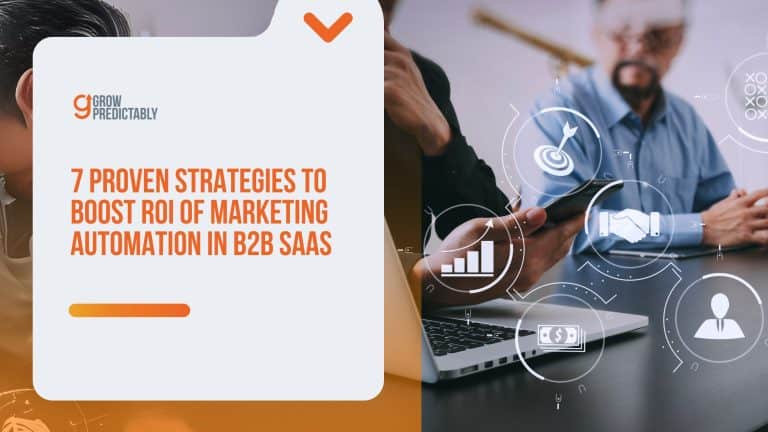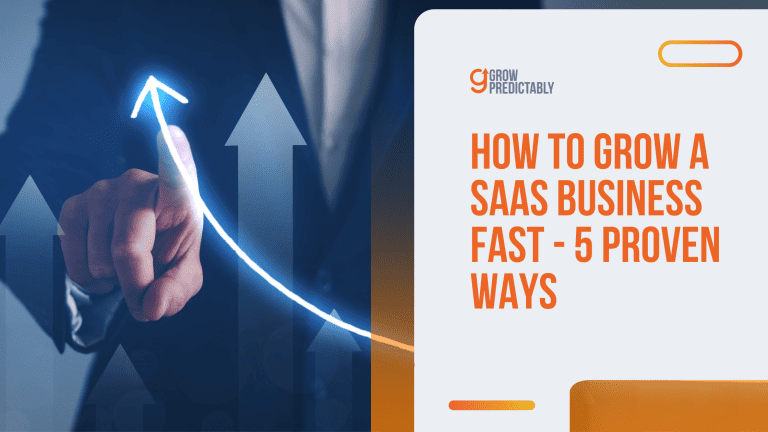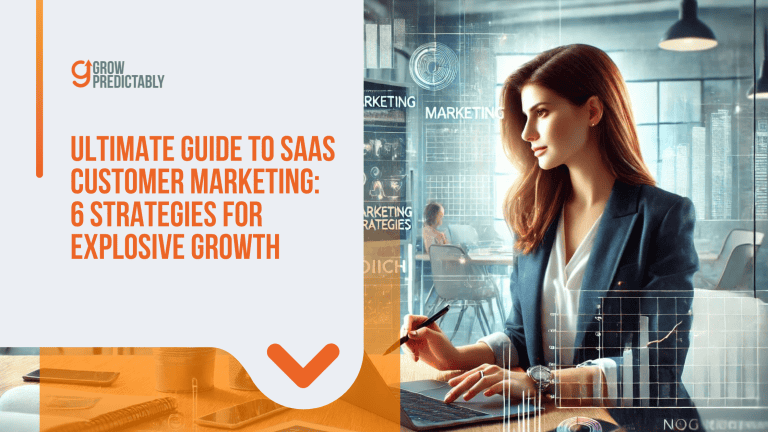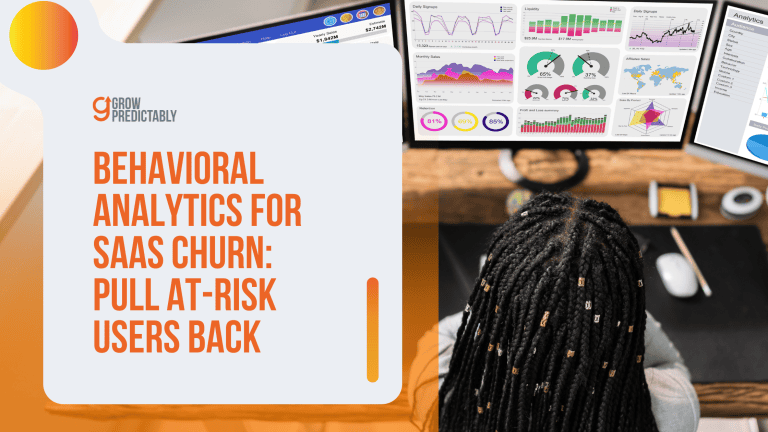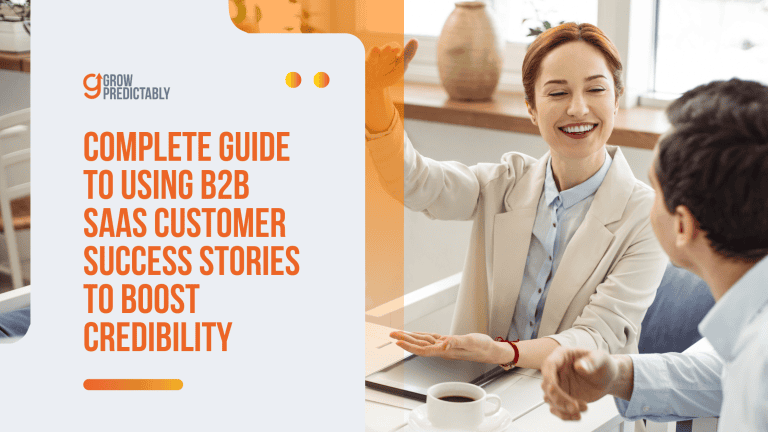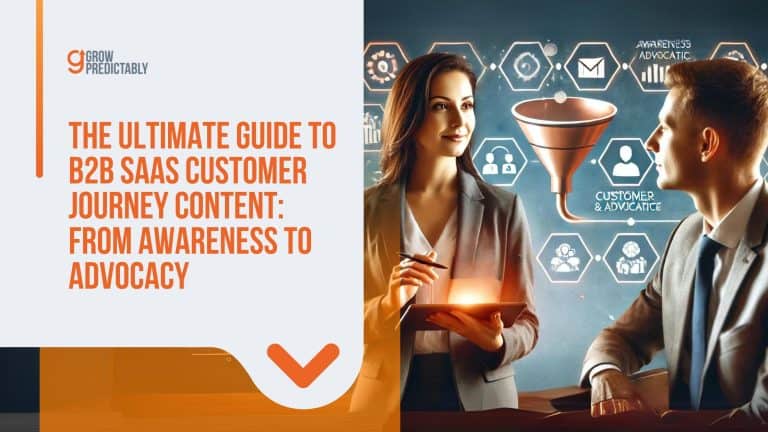How to Build B2B Customer Loyalty with AI: 5 Smart Program Examples That Work
Your best B2B customer just canceled their annual subscription.
Again.
Sound familiar?
You’re sitting there wondering how a client who seemed perfectly happy three months ago suddenly decided your SaaS wasn’t worth the investment anymore.
And the worst part?
You had no idea it was coming.
Here’s a statistic that’ll make your stomach drop: B2B companies lose an average of 10-15% of their customers annually, and acquiring a new customer costs 5-25 times more than retaining an existing customer (Harvard Business Review, 2023).
Focusing on existing customers is crucial for sustainable growth and long-term success.
However, what’s truly shocking is that companies employing AI-powered loyalty strategies are experiencing 35% higher retention rates and a 25% increase in customer lifetime value compared to those using traditional approaches (McKinsey, 2024).
These companies utilize artificial intelligence to foster customer loyalty by providing more personalized and efficient experiences.
The truth is, understanding how to build B2B customer loyalty with AI isn’t just about keeping customers around longer – it’s about transforming them into advocates who actively promote your business while spending more money with you.
Keep on reading!
Why Traditional Loyalty Programs Don’t Work for B2B SaaS
Most B2B SaaS companies copy what works in retail and wonder why their customers don’t stick around.
The truth is simple: business buyers think differently from individual consumers.
They don’t care about earning badges or collecting points when their job is on the line.
According to Forrester, 77% of B2B buyers report that their latest purchase was very complex or difficult, indicating that traditional loyalty tactics often fail to meet expectations.
To truly build customer loyalty in B2B SaaS, companies need effective strategies tailored to the unique challenges of B2B environments, rather than relying on traditional loyalty programs.

The Points Problem Doesn’t Drive Real Loyalty
Giving points for software logins is like rewarding someone for breathing.
Your customers already need to use your platform to do their jobs.
Daily login streaks and activity badges might work for fitness apps, but they’re meaningless when someone’s paycheck depends on using your tool.
Real loyalty comes from helping people succeed at work, not from gamifying basic usage patterns.
Here’s what actually happens with points-based systems in B2B:
- Users rack up points because they’re forced to use the software daily
- High engagement scores mask underlying frustration with the platform
- Points become meaningless currency that doesn’t translate to business value
- Teams focus on gaming the system instead of achieving real outcomes
The disconnect gets worse when you realize that engagement doesn’t equal satisfaction.
A user might log in every day because they have to, not because they want to.
This creates a false sense of security that leads to shocking churn rates when renewal time comes around.
Multiple Decision Makers Make Individual Loyalty Worthless
Your biggest champion might love your product, but they’re not writing the check.
In B2B sales, the person using your software daily is rarely the same person deciding whether to renew the contract.
Research by Gartner shows that the typical buying group for a complex B2B solution involves 6 to 10 decision makers, each armed with information they’ve gathered independently.
The decision-making reality looks like this:
- End users care about ease of use and daily functionality
- IT leaders worry about security, integration, and technical support
- Finance teams focus on cost justification and ROI metrics
- Executives want strategic alignment and competitive advantage
This means your “loyal” user could be singing your praises while the CFO is questioning every line item on the budget.
Traditional loyalty programs focus on individual behavior, but B2B decisions happen at the organizational level.
You need to create value for everyone involved in the buying process, not just the daily users.
Identifying and addressing your target audience within B2B organizations is essential to ensure that all stakeholders’ needs and motivations are met.
Complex Buying Cycles Can’t Be Influenced by Last-Minute Rewards
B2B software purchases take months, not minutes.
The average enterprise software buying cycle stretches 6-18 months, involving multiple stakeholders, budget approvals, and vendor comparisons.
Offering a discount in month five won’t change a decision that’s been building for half a year.
These extended timelines mean you’re dealing with:
- Budget planning cycles that happen annually or quarterly
- Lengthy evaluation periods with proof-of-concept requirements
- Legal and compliance reviews that can take weeks
- Change management considerations for entire teams or departments
These long cycles mean loyalty needs to be built continuously, not triggered by purchase behavior.
Nurturing long lasting relationships throughout the extended B2B buying cycle is essential to ensure customers remain engaged and committed over time.
Your customers are evaluating you every day through support interactions, product updates, and business results.
By the time they’re ready to buy or renew, their decision is already made based on accumulated value, not promotional offers.
Value vs Volume – Business Customers Care About Outcomes
Consumer loyalty programs reward customers for their frequency and volume of purchases.
Buy ten coffees, get one free.
Fly 50,000 miles, unlock premium status.
This transactional approach falls apart in B2B because business customers don’t want to use more software – they want better results from the software they already have.
Business customers measure success through concrete outcomes:
- Faster time-to-market for new products or features
- Reduced operational costs and improved efficiency
- Increased team productivity and collaboration
- Better data insights that drive strategic decisions
- Compliance adherence and risk reduction
Your customers measure success by business outcomes, not usage frequency.
They’ll gladly pay more for a solution that delivers measurable results than stick with a cheaper option that requires constant workarounds.
Delivering these measurable results is key to generating repeat business, as satisfied customers are more likely to return and deepen their relationship with your company.
This outcome-focused mindset demands an entirely different approach to building loyalty.
Understanding Your Customer’s Journey Position
The Customer Value Journey framework reveals why traditional loyalty programs often fall short.
Your customers move through distinct stages— from initial awareness through advocacy—and each stage requires different types of engagement.
Most loyalty programs only activate during the “ascend” stage, trying to drive repeat purchases.
But in B2B SaaS, true loyalty is built much earlier in the journey through consistent value delivery and relationship building.
Each stage of the journey requires specific attention:
- Awareness to Engagement: Educational content that solves real business problems
- Subscribe to Convert: Low-risk trials and proof-of-concept opportunities
- Excite stage: Onboarding support and quick wins that demonstrate value
- Ascend phase: Advanced features and integrations that scale with business growth
- Advocate to Promote: Case studies, referrals, and co-marketing opportunities
Understanding where each customer sits in this journey allows you to provide relevant value at the right time.
Delivering relevant information tailored to each stage ensures your communication and offers are always aligned with the customer’s current needs.
A customer in the “excite” stage needs onboarding support and quick wins, not upgrade offers.
Someone in the “advocate” stage might be ready to participate in case studies or referral programs.
This journey-based approach fosters genuine loyalty by aligning your efforts with what customers actually need, when they need it.
How AI Changes the B2B Loyalty Game
AI doesn’t just automate what you’re already doing – it completely changes how B2B loyalty works.
AI’s ability to analyze data, personalize experiences, and enhance loyalty programs goes far beyond simple automation, offering new ways to drive engagement and value.
Instead of waiting for problems to surface or guessing what customers want, AI gives you the power to predict, personalize, and act before your competition even knows what hit them.
McKinsey research indicates that companies utilizing AI for customer engagement experience a 15-20% increase in customer satisfaction and a 10-15% increase in revenue from enhanced customer experiences.
There is a growing trend for B2B companies to adopt AI as a strategic move to boost customer engagement and operational efficiency.
To maximize the impact of AI on loyalty, it’s crucial to focus on integrating AI with existing systems and processes, ensuring seamless data flow and actionable insights.

Predicts Problems Before They Happen
Your biggest churn risks aren’t the customers complaining – they’re the ones going silent.
AI spots the patterns human eyes miss, like when usage drops below normal thresholds or when specific feature adoption stalls.
Predictive analytics leverages historical data and past interactions to identify churn risks early, allowing you to take action before issues escalate.
This early warning system lets you intervene before customers even realize they’re unhappy.
AI-powered prediction helps you identify:
- Usage drops that signal churn risk weeks before contract renewal
- Feature adoption patterns that correlate with long-term customer success
- Support ticket trends that indicate systemic product issues
- Engagement patterns that predict expansion opportunities
- Insights from analyzing past interactions and historical data to uncover hidden churn signals
Traditional customer success teams rely on lagging indicators like support tickets or survey responses.
AI flips this approach by analyzing leading indicators from actual usage data.
When a customer’s login frequency drops 30% over two weeks, or when they stop using key features that drive value, your system flags them for immediate attention.
This predictive approach transforms customer success from reactive firefighting to proactive value creation.
Personalizes at Enterprise Scale
Most B2B companies treat personalization like a luxury they can’t afford.
AI makes enterprise-scale personalization not just possible, but profitable.
By analyzing behavioral data, customer preferences, and browsing behavior alongside Customer Avatar Canvas insights, AI enables a truly personalized experience for each customer’s specific business needs and user types.
Smart personalization goes beyond surface-level customization:
- Dashboard configurations that highlight metrics most relevant to each user role
- Content recommendations based on industry, company size, and growth stage
- Feature suggestions that align with current business objectives and challenges
- Communication preferences that match decision-maker styles and schedules
- Personalized recommendations generated in real time by analyzing browsing behavior and customer preferences
The Customer Avatar Canvas becomes exponentially more powerful when combined with AI.
Instead of creating one-size-fits-all experiences based on general personas, AI identifies micro-patterns within each avatar type.
A CFO avatar might prefer financial impact data presented as charts, while an operations manager prefers workflow improvements shown as process diagrams.
AI delivers both experiences automatically.
Right Message, Right Time, Right Person
B2B buying involves multiple stakeholders with different priorities and communication preferences.
AI ensures your loyalty efforts reach the right person with the right message at the optimal time.
AI-powered tools can efficiently handle customer inquiries and improve customer interactions by leveraging real-time data, enabling personalized and timely responses across multiple channels.
This means sending renewal discussions to budget holders, not just daily users.
AI-powered communication targeting works by:
- Mapping org charts to identify who actually makes financial decisions
- Timing messages based on budget cycles and planning periods
- Customizing content for each stakeholder’s specific concerns and priorities
- Triggering outreach when engagement patterns indicate readiness for conversation
AI helps you influence that hidden 57% by delivering value-driven communications throughout their silent evaluation period.
When the CFO gets cost optimization insights during budget planning season, or when the IT director receives security updates during compliance reviews, you’re building loyalty with the people who matter most.
Turns Data Into Action
The difference between good and great B2B companies isn’t the data they collect – it’s how quickly they turn that data into customer value.
AI provides data-driven insights and valuable insights that empower informed decision making, helping businesses act on information rather than just observe it.
AI connects the dots between customer behavior and business outcomes, then automates responses that actually move the loyalty needle.
Data-to-action transformation includes:
- Connecting usage patterns to business outcomes like revenue growth or cost savings
- Automating success triggers that deliver relevant resources when customers hit milestones
- Identifying expansion signals based on current usage approaching plan limits
- Triggering support interventions when behavior indicates potential roadblocks
Traditional analytics tell you what happened. AI tells you what to do about it.
When AI detects that customers using specific feature combinations have 40% higher retention rates, it automatically guides new users toward those features during onboarding.
When usage data shows someone is ready for advanced functionality, the system triggers targeted education content or sales outreach.
This automated intelligence turns every data point into a loyalty-building opportunity.
5 AI-Powered Loyalty Strategies That Actually Work for SaaS
These aren’t theoretical approaches or wishful thinking.
Real SaaS companies use these AI-powered strategies to predict churn, drive expansion, and turn customers into advocates.
By implementing these effective strategies, you can boost loyalty and optimize your marketing efforts for greater reach and ROI.
Each strategy connects directly to where your customers are in their journey and what they actually need to succeed.
Strategy 1: Smart Health Scoring & Intervention
AI doesn’t just track if customers are using your product – it predicts whether they’ll still be using it six months from now.
By monitoring dozens of usage signals simultaneously, AI creates health scores that reveal renewal likelihood with scary accuracy.
Machine learning and advanced AI algorithms analyze this data, enabling the system to continuously improve its predictions and interventions over time.
This gives you weeks or months to fix problems before they become cancellations.
Here’s how the system works in practice:
- Usage frequency tracking across all features and modules
- Feature adoption velocity that indicates successful onboarding
- Support ticket patterns that signal frustration or confusion
- Team expansion signals that show growing organizational adoption
- Integration usage that demonstrates platform stickiness
Slack revolutionized customer success by using engagement data to trigger proactive outreach.
When their AI detects declining message frequency or fewer active users in a workspace, customer success managers get automatic alerts.
According to their published case studies, this predictive approach helped them reduce churn by 25% and increase expansion revenue by 30%.
The key insight: they don’t wait for customers to complain or ask for help.
Your action plan starts simple.
Most SaaS platforms already collect basic usage data – you just need to turn it into actionable insights.
Start by tracking three core metrics: login frequency, feature usage depth, and time-to-value achievement.
Set up alerts when any metric drops below historical averages for individual accounts.
This basic health scoring gives you early warning signs without complex AI infrastructure.
This strategy directly supports the “Excite” stage of your customer journey.
After customers convert and start using your product, AI ensures they stay excited by catching problems before they become frustrations.
The goal isn’t just preventing churn – it’s maintaining the momentum that drives long-term loyalty.
Strategy 2: Behavioral Reward Triggers
Traditional loyalty programs reward transactions.
AI-powered reward programs go further by using data analytics and personalization to optimize rewards based on customer behavior, which significantly improves customer retention and helps in retaining customers over the long term.
AI-powered programs reward behaviors that actually predict long-term success.
By analyzing which customer actions correlate with higher retention rates, AI automatically triggers rewards for the behaviors that matter most to your business outcomes.
Smart behavioral triggers focus on actions that drive stickiness:
- Completing onboarding milestones that indicate successful product adoption
- Training completion that leads to deeper feature usage
- Team member invitations that expand organizational adoption
- Integration setup that creates switching costs
- Content creation within the platform that builds investment
HubSpot’s certification program demonstrates this approach perfectly.
Instead of rewarding purchase frequency, they reward learning behaviors that drive platform adoption.
Their data shows that certified users have 60% higher retention rates and generate 40% more revenue than non-certified users.
The certifications aren’t just education – they’re behavioral engineering that creates loyal, successful customers.
Your implementation starts with mapping customer success milestones to automated rewards. Identify the top three actions that predict long-term retention in your product.
This might be completing the initial setup, inviting team members, or using specific features.
Create recognition or rewards that trigger automatically when customers complete these actions.
The rewards don’t need to be expensive – often recognition and exclusive access work better than discounts.
Different Customer Avatar types need different motivators.
Administrators may be motivated by efficiency badges or exclusive access to training.
End users might prefer public recognition or early feature previews.
Decision makers often respond to business impact reports or industry recognition.
Use your Customer Avatar Canvas insights to tailor rewards that actually resonate with each user type’s professional goals.
Strategy 3: Predictive Upsell Timing
Most SaaS companies treat upselling like a calendar event, pitching upgrades during renewal cycles or after arbitrary periods.
AI changes this by identifying the exact moment when customers are ready for more features based on their actual usage patterns and business growth signals.
AI-powered upsell timing analyzes multiple readiness indicators:
Current plan utilization is approaching or exceeding limits
- Feature request patterns that suggest a need for advanced capabilities
- Team growth signals like new user additions or role expansions
- Usage intensity increases that indicate business success with your platform
- Integration attempts that suggest workflow complexity requiring higher tiers
Zoom’s AI-driven upgrade suggestions exemplify this approach.
Their system tracks meeting frequency, participant counts, and feature usage patterns to identify when customers outgrow their current plans.
According to their investor presentations, this predictive approach increased their expansion revenue rate by 130% year-over-year.
The key: they suggest upgrades when customers need them, not when Zoom needs revenue.
Track leading indicators that predict upgrade readiness in your own customer base.
Look for patterns like storage approaching limits, API calls increasing, or users consistently hitting feature restrictions.
Analyzing purchase history can also help identify customers likely to make repeat business or upgrade, allowing you to target those most receptive to expansion offers.
Set up automated alerts when multiple readiness signals align.
The goal isn’t pushing upgrades – it’s ensuring customers have the tools they need exactly when they need them.
This strategy masters the “Ascend” stage of the customer journey by knowing exactly when customers are ready to level up.
Instead of generic upgrade pitches, AI enables personalized expansion conversations based on demonstrated need and proven value creation.
Strategy 4: Personalized Success Paths
Generic onboarding kills momentum.
AI creates custom success journeys that adapt to each customer’s industry, company size, role, and specific business objectives.
This personalized approach dramatically improves time-to-value and long-term adoption rates.
By delivering personalized service, you ensure improved customer experience and foster positive experiences that drive loyalty and retention.
Personalized success paths consider multiple factors:
- Industry-specific use cases and best practices
- Company size constraints and resource availability
- Role-based priorities and success metrics
- Technical sophistication levels and integration needs
- Business maturity stages and growth trajectories
Salesforce’s MyTrailhead platform showcases this personalization at scale.
Their AI adapts learning paths based on user role, company size, and industry vertical.
Published results show that personalized learning paths increase feature adoption by 45% and reduce time-to-productivity by 35%.
Users get exactly the training and guidance they need for their specific situation.
Segment your customers using detailed Customer Avatar Canvas data and create targeted success journeys for each type.
A startup founder needs rapid setup guides and growth hacks.
An enterprise administrator needs security protocols and integration documentation.
A department manager needs team collaboration features and reporting tools.
Each path should focus on delivering quick wins relevant to that avatar’s immediate needs.
The Before/After transformation becomes crucial here.
Show customers the specific outcomes they’ll achieve by following their personalized path.
Don’t just explain features – demonstrate how those features solve their exact problems and deliver measurable business value.
This outcome-focused approach builds loyalty by connecting product usage to professional success.
Strategy 5: Automated Advocacy Programs
Your happiest customers often want to help you succeed, but most companies never ask or make it easy.
AI identifies these potential advocates automatically and creates seamless opportunities for them to share their success stories, refer new customers, or participate in co-marketing initiatives.
AI-powered advocacy identification analyzes satisfaction signals:
- High NPS scores combined with consistent positive feedback
- Deep feature usage that indicates platform mastery
- Low support ticket volume suggesting smooth user experience
- Expansion behavior showing growing investment in your platform
- Engagement patterns like attending webinars or reading content regularly
Atlassian’s champion program uses product usage data to identify ideal advocates automatically.
Their AI flags customers who demonstrate high engagement, successful outcomes, and positive sentiment.
According to their community team, automated identification increased advocacy participation by 300% while maintaining quality standards.
The system ensures they’re inviting the right people at the right time.
Set up advocacy triggers based on multiple satisfaction indicators.
Don’t rely solely on NPS scores – combine them with usage data, support interactions, and expansion behavior.
When customers hit your advocacy thresholds, automatically invite them to relevant opportunities like case studies, reference calls, or speaking engagements.
Make participation easy with templates, talking points, and minimal time commitments.
This strategy transforms satisfied customers into brand advocates by leveraging AI to foster meaningful connections and foster long term loyalty.
These brand advocates actively promote your product through the final stage of the customer journey.
These advocates don’t just reduce acquisition costs – they provide social proof that influences prospects throughout their entire buying process.
AI ensures you’re identifying and nurturing these valuable relationships systematically, not accidentally.
Your 90-Day AI Loyalty Implementation Plan
Most companies fail at AI loyalty programs because they try to build everything at once.
Successful implementation relies on seamless integration with existing CRM systems and the use of AI powered tools, which enable real-time data access, advanced analytics, and personalized customer engagement.
This plan breaks the process into manageable chunks that build on each other.
By the end of 90 days, you’ll have a working AI loyalty system that actually moves your retention numbers.
Month 1: Foundation & Customer Understanding
You can’t build effective loyalty programs without understanding what makes your customers tick.
This month focuses on collecting and organizing the data you need to make smart decisions.
Don’t skip this step – poor customer understanding is why most loyalty programs fail.
➡️ Week 1-2: Data Audit
Start by mapping every place your customers interact with your business.
Most SaaS companies have data scattered across a dozen different tools without realizing it.
Your customers leave digital breadcrumbs everywhere, but you need to collect them systematically.
Leveraging historical data from these sources allows you to analyze past interactions and customer preferences, which is essential for personalizing your loyalty programs and making data-driven decisions.
Create a comprehensive list of your data sources:
- Product usage data from your application analytics
- Support interactions from your helpdesk system
- Sales communications from your CRM platform
- Marketing engagement from email and content systems
- Financial data from your billing platform
- Survey responses from customer feedback tools
Identify gaps in your customer journey tracking.
Most companies have blind spots during onboarding, between renewal cycles, or during expansion conversations.
According to Salesforce research, companies with complete customer data see 41% higher revenue per customer, but only 32% of companies actually have unified customer views.
Document what data you’re missing and prioritize filling the most critical gaps.
Set up basic analytics if you don’t have proper tracking in place.
At minimum, you need to track user login frequency, feature usage depth, and customer lifecycle stage progression.
AI can help automate routine tasks and time consuming tasks related to data collection and analysis, reducing manual work and improving efficiency. These three metrics form the foundation of any effective health scoring system.
➡️ Week 3-4: Customer Avatar Development
Generic customer segments lead to generic loyalty programs that nobody cares about.
Use the Customer Avatar Canvas to create detailed profiles of your different user types.
This isn’t about demographics – it’s about understanding motivations, challenges, and success metrics for each type of person using your product.
Interview customers at different lifecycle stages to understand their journey:
- New customers who recently converted from trials
- Established users who’ve been with you 6-12 months
- Long-term customers who’ve stayed with you over a year
- Churned customers who can explain why they left
Document specific pain points, motivations, and success metrics for each avatar.
A startup founder cares about speed and growth metrics.
An enterprise administrator focuses on security and compliance.
A department manager wants team productivity and reporting.
These differences matter when designing loyalty experiences.
The Before/After transformation section of your Customer Avatar Canvas becomes crucial here.
Understanding how your product changes each customer type’s professional life gives you the foundation for creating meaningful loyalty programs that align with their actual goals.
Month 2: Smart Systems Setup
Now you have the customer understanding needed to build systems that actually work.
This month focuses on implementing the technology foundation that powers AI-driven loyalty programs.
Start simple and add complexity as you learn what works.
➡️ Week 5-6: Health Scoring Implementation
Select a health scoring platform that seamlessly integrates with your existing technology stack.
AI-driven tools can support your customer service team by analyzing large datasets and providing actionable insights, making it easier to deliver personalized customer experiences and improve customer retention.
HubSpot is well-suited for smaller companies with straightforward needs.
ChurnZero provides more advanced analytics for mid-market SaaS companies.
Gainsight provides enterprise-level functionality for complex customer success operations.
Define the key behaviors that predict success versus churn in your customer base.
Research by Lincoln Murphy reveals that successful SaaS customers typically exhibit three key patterns: they achieve initial value quickly, they gradually expand their usage over time, and they effectively integrate your product into their workflows.
Identify which specific actions in your product correlate with these patterns.
Set up automated alerts for at-risk accounts based on multiple signals, not just single metrics.
Timely intervention when these alerts trigger can make all the difference in customer retention and satisfaction.
A customer might have low login frequency but high support satisfaction.
Another might use lots of features but struggle with team adoption.
Create scoring systems that weight multiple factors and trigger human intervention when overall health scores drop below acceptable thresholds.
➡️ Week 7-8: Reward System Design
Map rewards to behaviors that actually drive long-term value, not just short-term engagement.
Rewarding daily logins might boost your activity metrics, but it won’t improve retention if users aren’t achieving business value.
Focus on actions that create stickiness and demonstrate success.
Create different reward tracks for different customer avatars based on your Week 3-4 research:
- Power users might appreciate early access to new features or advanced training
- Administrators could value efficiency certifications or exclusive best practices content
- Decision makers often prefer business impact reports or industry recognition
- Team leaders might want collaboration tools or team productivity insights
Set up automated triggers for your top three loyalty actions.
Start simple with actions like completing onboarding milestones, achieving usage thresholds, or expanding team adoption.
The rewards don’t need to be expensive – recognition and access often work better than discounts for B2B customers.
Month 3: Launch & Optimize
The final month focuses on testing your systems with real customers and improving based on actual results.
This is where theoretical plans meet practical reality.
Expect to learn things that surprise you and be ready to adjust quickly.
➡️ Week 9-10: Pilot Program Launch
Start with your best-fit customer segment – the avatar type that’s most likely to engage positively with loyalty programs.
This might be your power users who already love your product, or your newest customers who are still building habits.
Don’t try to include everyone initially.
Monitor key metrics that actually matter for business outcomes:
- Customer engagement with loyalty program elements
- Feature adoption rates among program participants
- Support ticket volume changes for enrolled customers
- Retention improvements compared to control groups
- Revenue expansion from program participants
Gather feedback through multiple channels.
Send surveys, but also monitor support conversations and changes in user behavior.
Some customers will tell you they love the program, but their usage patterns show that they’re not actually engaging.
Pay attention to both stated preferences and revealed preferences.
Delivering relevant content through AI-driven personalization at this stage is crucial for increasing engagement and building brand loyalty, especially as you monitor and respond to customer feedback.
➡️ Week 11-12: Scale and Improve
Expand to additional customer segments based on what you learned during the pilot.
You’ll likely discover that different avatar types respond to different program elements.
Use this insight to create more targeted loyalty experiences, rather than relying on one-size-fits-all approaches.
Add more sophisticated AI features as your foundation proves solid.
This might include predictive upsell timing, behavioral reward triggers, or automated advocacy identification.
According to McKinsey research, companies that successfully scale AI initiatives see 3-15% revenue increases within the first year of implementation.
Document what’s working and what isn’t with specific metrics and customer feedback.
Incorporating expert insights into this documentation process ensures your ongoing optimization is guided by proven strategies and industry best practices.
Most successful AI loyalty programs evolve significantly from their initial design based on customer response and business results.
By the end of these 90 days, you’ll have a working AI loyalty system that can predict customer health, reward valuable behaviors, and drive measurable retention improvements.
More importantly, you’ll have the foundation and learning process needed to keep improving your loyalty efforts over time.
Common Mistakes That Kill AI Loyalty Programs
Most AI loyalty programs fail not because the technology doesn’t work, but because companies make predictable mistakes that destroy customer relationships.
These failures happen when businesses prioritize efficiency over effectiveness or assume AI can replace human judgment entirely.
Over-Automation: When Robots Replace Human Relationships Entirely
AI should enhance human relationships, not replace them.
The biggest mistake companies make is automating every customer interaction without understanding that B2B relationships require genuine human connection.
According to Salesforce research, 84% of B2B buyers say being treated like a person, not a number, is very important to winning their business.
Successful AI loyalty programs use automation for data analysis and workflow triggers, but humans handle the actual relationship building.
AI might identify when a customer needs help, but a real person should provide that help.
AI can predict when someone’s ready for an upgrade conversation, but a human should have that conversation.
The warning signs of over-automation include: generic automated messages that obviously come from robots, loyalty rewards that arrive without context or explanation, and customer complaints about feeling like just another data point.
When customers start saying they miss talking to actual people, you’ve gone too far down the automation path.
Wrong Rewards: Giving What You Think Customers Want vs. What They Actually Value
Most companies design rewards based on what they’d want to receive rather than what their customers actually value.
This disconnect becomes obvious when expensive loyalty programs generate little engagement while simple recognition efforts drive significant behavior change.
B2B customers often value recognition and access more than discounts or points.
A case study opportunity might be more valuable than a 10% discount to a successful customer who wants industry recognition.
Early access to new features often matters more than cashback to power users who want competitive advantages.
The mistake compounds when companies assume all customers want the same rewards.
A startup founder might appreciate speed and agility perks.
An enterprise administrator needs compliance and security benefits.
A department manager wants team productivity tools.
Using generic rewards for diverse customer types guarantees mediocre results across all segments.
Ignoring Context: Not Considering Where Customers Are in Their Business Cycle
AI loyalty programs often overlook the fact that B2B customers have distinct business cycles, budget cycles, and growth phases that influence their interactions with your product.
Offering expansion opportunities during budget freeze periods or pushing advanced features during crisis management phases shows you’re not paying attention to customer context.
Smart loyalty programs adapt to customer circumstances.
A company going through rapid hiring might appreciate team collaboration features and bulk user discounts.
A business facing economic pressure might value cost optimization tools and efficiency training.
A company preparing for compliance audits needs security features and documentation support.
Context also includes industry timing. Retail companies need different support during the holiday seasons.
Education software customers have academic calendar considerations.
Healthcare companies deal with regulatory changes that affect their technology priorities. Ignoring these patterns makes even well-intentioned loyalty efforts feel tone-deaf.
Data Overload: Tracking Everything but Acting on Nothing
Modern SaaS companies can track hundreds of customer data points, but most loyalty programs suffer from analysis paralysis.
Teams spend more time building dashboards than taking action on customer insights.
Research by Harvard Business Review shows that companies using data-driven decision making are 5% more productive, but only when they actually use the data to change behavior.
The data overload trap occurs when companies track metrics that don’t align with actionable outcomes.
Knowing that someone logs in daily doesn’t help if you don’t know whether they’re achieving business value.
Measuring feature usage is useless if you can’t correlate it with customer success or retention.
Effective AI loyalty programs focus on fewer metrics that directly predict customer outcomes.
Track leading indicators that give you time to intervene, not lagging indicators that tell you what already happened.
Connect every data point to specific actions your team can take to improve customer relationships.
One-Size-Fits-All: Using the Same Approach for Startup CTOs and Enterprise Procurement Teams
The fatal flaw in most B2B loyalty programs is treating diverse customer types with a single, uniform approach.
A startup CTO making fast decisions with a limited budget needs an entirely different engagement than an enterprise procurement team managing complex vendor relationships through formal processes.
Customer Avatar Canvas insights become crucial for avoiding this mistake.
Different personas have different pain points, decision-making processes, and success metrics.
Your loyalty program needs to reflect these differences with targeted experiences that feel relevant to each customer type.
Startup customers might prefer quick implementation support and growth-focused features.
Enterprise customers need compliance documentation and formal training programs.
Mid-market companies often seek best practices from similar businesses and guidance on scaling.
One loyalty program trying to serve all these needs effectively serves none of them well.
The solution isn’t creating completely separate programs – it’s building flexible systems that adapt to customer characteristics while maintaining operational efficiency.
FAQs
The Smart Path Forward: Building Loyalty That Actually Lasts
The companies winning with AI loyalty programs aren’t the ones with the fanciest technology – they’re the ones who understand that loyalty comes from delivering real value at the right moments.
Your customers don’t care about your AI sophistication.
They care about whether you help them succeed in their jobs and grow their businesses.
Start with understanding your customers deeply using tools like the Customer Avatar Canvas and Customer Value Journey mapping.
Then layer in AI to amplify what already works, not replace human judgment entirely.
Focus on predicting and preventing problems rather than just responding to them after they happen.
The 90-day implementation plan gives you a realistic path to getting started without overwhelming your team or customers.
Most successful AI loyalty programs begin simple and evolve based on actual customer response, not theoretical best practices.
Remember that B2B loyalty is fundamentally different from consumer loyalty.
Your customers are professionals trying to do their jobs better, not individuals seeking entertainment or bargains.
When your AI helps them achieve measurable business outcomes, loyalty follows naturally.
When it doesn’t, no amount of automation or rewards will save the relationship.
The future belongs to companies that use AI to understand customers better and serve them more effectively – not to replace human relationships, but to make them more meaningful and valuable for everyone involved.



